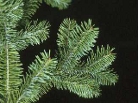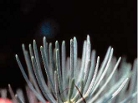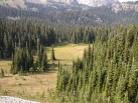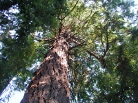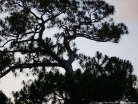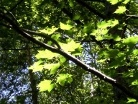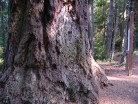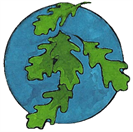
Balsam Fir,
Abies balsamea (L.) Mill
Abies balsamea (L.) Mill
Sources:
Trees of North America- A guide to field identification-a Golden Field Guide from St. Martin's Press © 2002 By C. Frank Brockman p.30
The Encyclopedia of North American Trees by Sam Benvie. Firefly Books Ltd., 2000 Buffalo, NY © 2000 Sam Benvie p.24
Herbal, The Essential Guide to Herbs for Living, by Deni Brown, © 2001 Pavilion Books, an imprint of Anova Books Company LTD. 10 Southcombe Steet, London W13 0RA. 2001 Edition published by Metro Books. Text © 2001 Deni Brown p. 24, 25
Diseases of Trees and Shrubs, 2nd edition, by Wayne A. Sinclair and Howard H. Lyon, © 2005 Cornell University, Cornell University Press, p. 56, 280, 282, 324, 454
A Natural History of North American Trees, by Donald Culross Peattier © 2007 by Houghton Mifflin Company p. 123, 124
USDA, NRCS. 2011. The PLANTS Database (<http://plants.usda.gov/>, 22 August 2011). National Plant Data Team, Greensboro, NC 27401-4901 USA.
USDA NRCS Plant Fact Sheet fs_abba.docx
Uchytil, Ronald J. 1991. Abies balsamea. In: Fire Effects Information System, [Online]. U.S. Department of Agriculture, Forest Service, Rocky Mountain Research Station, Fire Sciences Laboratory (Producer). Available: http://www.fs.fed.us/database/feis/ [2011, August 22].
Trees of North America- A guide to field identification-a Golden Field Guide from St. Martin's Press © 2002 By C. Frank Brockman p.30
The Encyclopedia of North American Trees by Sam Benvie. Firefly Books Ltd., 2000 Buffalo, NY © 2000 Sam Benvie p.24
Herbal, The Essential Guide to Herbs for Living, by Deni Brown, © 2001 Pavilion Books, an imprint of Anova Books Company LTD. 10 Southcombe Steet, London W13 0RA. 2001 Edition published by Metro Books. Text © 2001 Deni Brown p. 24, 25
Diseases of Trees and Shrubs, 2nd edition, by Wayne A. Sinclair and Howard H. Lyon, © 2005 Cornell University, Cornell University Press, p. 56, 280, 282, 324, 454
A Natural History of North American Trees, by Donald Culross Peattier © 2007 by Houghton Mifflin Company p. 123, 124
USDA, NRCS. 2011. The PLANTS Database (<http://plants.usda.gov/>, 22 August 2011). National Plant Data Team, Greensboro, NC 27401-4901 USA.
USDA NRCS Plant Fact Sheet fs_abba.docx
Uchytil, Ronald J. 1991. Abies balsamea. In: Fire Effects Information System, [Online]. U.S. Department of Agriculture, Forest Service, Rocky Mountain Research Station, Fire Sciences Laboratory (Producer). Available: http://www.fs.fed.us/database/feis/ [2011, August 22].
Visit the Image Gallery for more pictures
Native distribution map for Abies balsamea var. phanerolepis
Map courtesty USDA NRCS PLANTS Database
Map courtesty USDA NRCS PLANTS Database

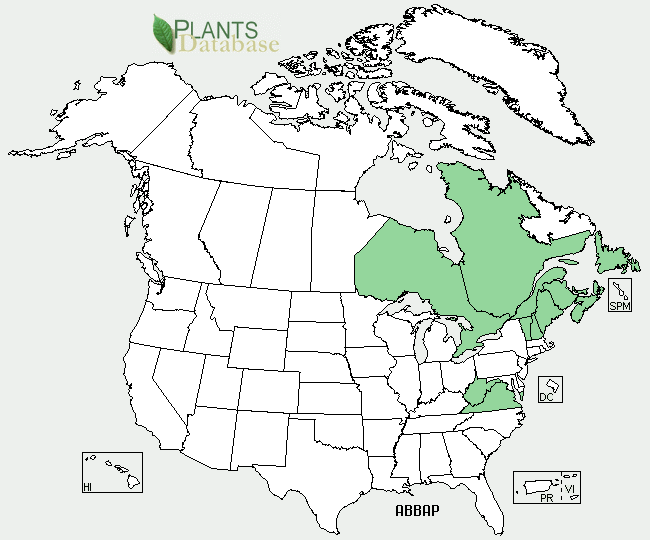
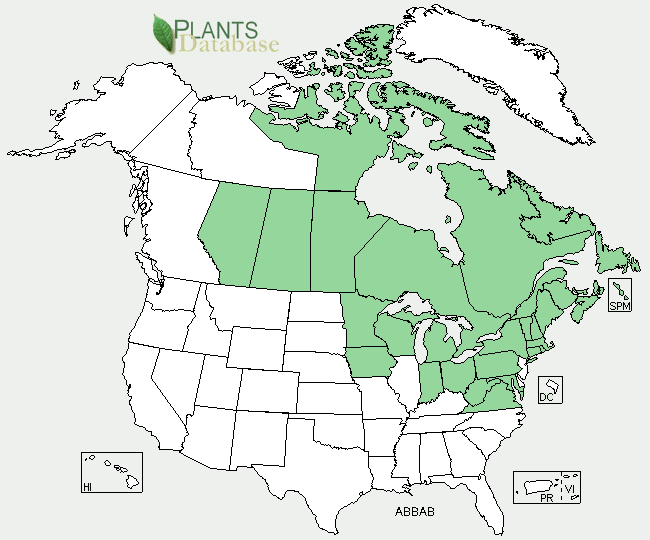
Native distribution map for Abies balsamea var. balsamea
Map courtesty USDA NRCS PLANTS Database
Map courtesty USDA NRCS PLANTS Database
ENDANGERED IN CONNECTICUT
State List: CT, IA, IN, MA, MD, ME, MI, MN, NH, NY, OH, PA, RI, VA, VT, WI, WV
Canada: AB, LB, MB, NB, NF, NS, NU, ON, PE, QC, SK
Canada: AB, LB, MB, NB, NF, NS, NU, ON, PE, QC, SK
Balsam fir is divided into two varieties:
•var. phanerolepis
•var. balsamea
•var. phanerolepis
•var. balsamea
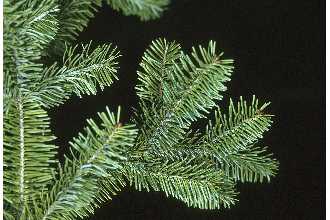
Photo citation: Robert H. Mohlenbrock @ USDA-NRCS PLANTS Database/USDA NRCS. 1995. Northeast wetland flora: Field office guide to plant species. Northeast National Technical Center, Chester.
Uses
Historically, Balsam fir was once used in the construction of log cabins and as an impromptu mattress in which the pleasantly aromatic foliage was laid across heavier spruce boughs. Modern recognition of this species is most attributed to its use in the Christmas tree industry where it is considered superior to spruce as it drops less needles. The bark blisters contain resin otherwise known as Canadian Balsam. An interesting characteristic of the resin is its ability to refract light exactly as glass does, which lends itself useful in science labs on microscope slides. Additionally, the resin is used in making varnish and in many cough medicines. The lightweight and soft wood of Abies balsamea has a low shock resistance and decays rapidly but it resists splitting. It is not suitable for use as poles but is often used in naval stores, for pulpwood and can be found as nursery stock. The foliage and seeds are an important food source for moose, small mammals and birds.
Historically, Balsam fir was once used in the construction of log cabins and as an impromptu mattress in which the pleasantly aromatic foliage was laid across heavier spruce boughs. Modern recognition of this species is most attributed to its use in the Christmas tree industry where it is considered superior to spruce as it drops less needles. The bark blisters contain resin otherwise known as Canadian Balsam. An interesting characteristic of the resin is its ability to refract light exactly as glass does, which lends itself useful in science labs on microscope slides. Additionally, the resin is used in making varnish and in many cough medicines. The lightweight and soft wood of Abies balsamea has a low shock resistance and decays rapidly but it resists splitting. It is not suitable for use as poles but is often used in naval stores, for pulpwood and can be found as nursery stock. The foliage and seeds are an important food source for moose, small mammals and birds.
Balsam Fir is a native conifer found throughout most of Canada, as well as New England and the Great Lake areas of the United States. There are two varieties of Abies balsamea, one being typical of the species, var. balsamea, and the other being var. phanerolepis. For this article, we will discuss the species as a whole.
A slow growing tree species, the oldest individual trees are typically not more than 200 years old. Reaching 40 to 60 feet in height and 1 to 1.5 feet in diameter, a single trunk supports whorled branches. The symmetrical and spire-like crown is sometimes Krummholz, or deformed, if growing in high, windswept elevations or
A slow growing tree species, the oldest individual trees are typically not more than 200 years old. Reaching 40 to 60 feet in height and 1 to 1.5 feet in diameter, a single trunk supports whorled branches. The symmetrical and spire-like crown is sometimes Krummholz, or deformed, if growing in high, windswept elevations or
seaside. The shallow root system is seldom 30 inches below the surface with the exception of trees growing in more sandy soils. All needles but those on the uppermost branches are 2 ranked and are between .8 to 1.5 inches long, flat, dark green, blunt or notched at the tip, and have a spicy fragrance when crushed. They also have silvery or white bands, called stomata, running the length of their underside. The needles can be a good judge for the overall health of the tree, with darker needles signaling the best health. The purplish-brown, cylindrical cones of A. balsamea sit upright on the branches and are 2 to 4 inches long. Like most firs, the bracts are shorter than the scales. Often covered with resinous blisters, the bark of young trees is gray and smooth turning more reddish brown and scaly with age. Yellow flowers bloom in mid summer and both male and female flowers may be found on the same tree.
Habitat
Balsam fir achieves the best growth on moist and rocky soils near streams and lakes with a pH between 4.0-6.0. While adapted to all soil types, growth is slowed considerably on sandy or gravelly soils. In some areas of its native range, it prefers limestone outcroppings as well as higher elevations in the southernmost reaches. Annually, A. Balsamea needs 18-60 inches of rain and 80 frost free days. It can survive down to -43°F and has a low drought tolerance. Balsam fir is more shade tolerant than most firs, although this tolerance dimishes with age.
Propogation
Typical methods for propogation include both bare root and container. Seeds require cold stratification, however only about 50% of seeds are viable. One of the best seeds beds is rotting wood, especially when nestled within a layer of humus.
Habitat
Balsam fir achieves the best growth on moist and rocky soils near streams and lakes with a pH between 4.0-6.0. While adapted to all soil types, growth is slowed considerably on sandy or gravelly soils. In some areas of its native range, it prefers limestone outcroppings as well as higher elevations in the southernmost reaches. Annually, A. Balsamea needs 18-60 inches of rain and 80 frost free days. It can survive down to -43°F and has a low drought tolerance. Balsam fir is more shade tolerant than most firs, although this tolerance dimishes with age.
Propogation
Typical methods for propogation include both bare root and container. Seeds require cold stratification, however only about 50% of seeds are viable. One of the best seeds beds is rotting wood, especially when nestled within a layer of humus.
Pests, Disease and Elemental
Balsam fir is extremely susceptible to fire, in fact it is the least fire resistant conifer in the northeast. The foliage itself is highly flammable as is the resin. Additionally, this species is subject to windthrow and breakage often occurs from wind or snow. It is also less suitable for landscape use in urban setting because of its intolerance to both soil and air pollution. Several insect pests are associate with Balsam fir including the introduced balsam wooly adelgid. Other known pests are hemlock loopers and several budworm species. There are many diseases which infect this native species. Among them are several fern rusts, which when severe can result in mortality. Trunk decay, heart rot, red rot, butt rot, ring scale and cankers are caused by fungal infections and often infect 50% of all trees over 70 years old. Dwarf mistletoe is an occasional nuisance but more often witches broom contributes to declining health. Orange spermagonia causes yellow blister like growths on the undersides of needles and broom rust caused by Melampsorella caryphyllacearum causes needle loss.
Balsam fir is extremely susceptible to fire, in fact it is the least fire resistant conifer in the northeast. The foliage itself is highly flammable as is the resin. Additionally, this species is subject to windthrow and breakage often occurs from wind or snow. It is also less suitable for landscape use in urban setting because of its intolerance to both soil and air pollution. Several insect pests are associate with Balsam fir including the introduced balsam wooly adelgid. Other known pests are hemlock loopers and several budworm species. There are many diseases which infect this native species. Among them are several fern rusts, which when severe can result in mortality. Trunk decay, heart rot, red rot, butt rot, ring scale and cankers are caused by fungal infections and often infect 50% of all trees over 70 years old. Dwarf mistletoe is an occasional nuisance but more often witches broom contributes to declining health. Orange spermagonia causes yellow blister like growths on the undersides of needles and broom rust caused by Melampsorella caryphyllacearum causes needle loss.



Monday, April 07, 2025

|
|
|
|
|
| A-Z scientific | ||
| A-Z by Common Name | ||
| Families | ||
| Browse by State | ||
| Rare or Endangered Species | ||
| Trees_with_Special_Uses | ||
| Tallest and Biggest |
| Aceraceae Maple Family | ||
| Anacardiaceae Sumac Family | ||
| Annonaceae Custard Apple Family | ||
| Aquifoliaceae Holly Family | ||
| Arecaceae, Palm Family | ||
| Betulaceae Birch family | ||
| Bignoniaceae Trumpet Creeper Family | ||
| Burseraceae Frankincense Family | ||
| Caprifoliaceae Honeysuckle Family | ||
| Chrysobalanaceae Coco-plum Family | ||
| Cornaceae Dogwood Family | ||
| Cupressaceae Cypress Family | ||
| Cyrillaceae Cyrilla Family | ||
| Ebenaceae Ebony Family | ||
| Ericaceae Heath Family | ||
| Fabaceae Pea Family | ||
| Fagaceae Beech Family | ||
| Hamamelidaceae Witch Hazel Ffamily | ||
| Hippocastanaceae Horse Chestnut Family | ||
| Juglandaceae Walnut Family | ||
| Lauraceae Laurel Family | ||
| Leitneriaceae Corkwood Family | ||
| Magnoliaceae Magnolia Family | ||
| Meliaceae Mahogany Family | ||
| Moraceae Mulberry Family | ||
| Myricaceae Bayberry Family | ||
| Myrsinaceae Myrsine Family | ||
| Myrtaceae Myrtle Family | ||
| Nyctaginaceae Four Oclock Family | ||
| Olacaceae Olax Family | ||
| Oleaceae Olive Family | ||
| Pinaceae Pine Family | ||
| Platanaceae Plane Tree Family | ||
| Polygonaceae Buckwheat Family | ||
| Rhamnaceae Buckthorn Family | ||
| Rosaceae Rose Family | ||
| Rubiaceae Madder Family | ||
| Rutaceae Rue Family | ||
| Salicaceae Willow Family | ||
| Sapindaceae Soapberry Family | ||
| Sapotaceae Sapodilla Family | ||
| Simaroubaceae Quassia Family | ||
| Styracaceae Storax Family | ||
| Symplocaceae Sweetleaf Family | ||
| Theaceae Tea Family | ||
| Tiliaceae Lindon Family | ||
| Ulmaceae Elm Family | ||
| Taxaceae Yew Family | ||
| Yucca Family |
| Maple A-Z |
| sumac_family_a-z |
| custard_apple_family_a-z |
| holly_trees_a-z |
| palm_family_a-z |
| birch_family_a-z |
| trumpet_creeper_family_a-z |
| honeysuckle_family_a-z |
| dogwood_family_a-z |
| cypress_family_a-z |
| heath_family_a-z |
| pea_family_a-z |
| beech_family_a-z |
| walnut_family_a-z |
| magnolia_family_a-z |
| olive_family_a-z |
| rose_family_a-z |
| willow_family_a-z |
| franklinia |
| elm_family_a-z |
| Federal List | ||
| State Lists | ||
| Invasive_species |
| Restoration of the American Chestnut | ||
| Restoration of the American Elm | ||
| Sustainable Forestry |
| Contact Us | ||
| Our Contributors | ||
| Photo of the Month | ||
| Usage Requirements | ||
| FAQ | ||
| Report a Broken Link |
| photo_submission |
| Photo Store |
™

Want to add your tree to our picture gallery? Click here for details!
Tree lists:
•A-Z by scientific
name
•A-Z by common
name
•By Family
For state A-Z list click state name below.
•A-Z by scientific
name
•A-Z by common
name
•By Family
For state A-Z list click state name below.
-Color denotes a tree that is rare or endangered

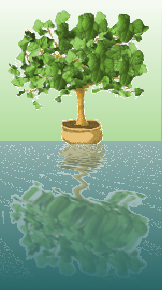

Custom Search
